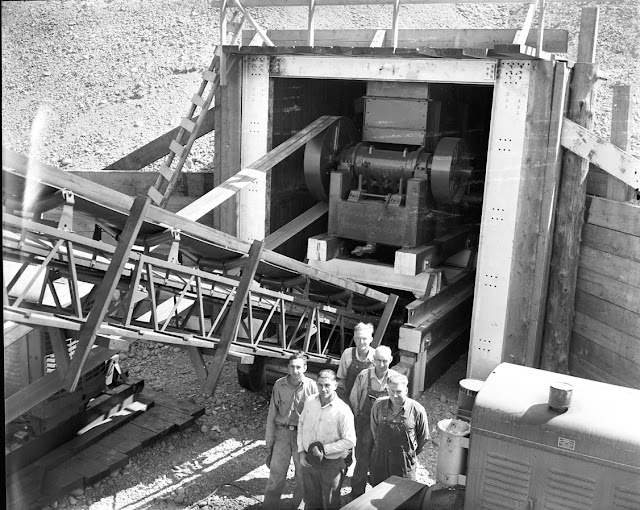
Little Mountain Park is one of those unexpected perks of living in Mount Vernon, WA. Even on a cold, misty, foggy morning escaping onto the well-maintained trails and ascending to one of the lookouts provides a much needed solace. Thanks to the Trail Builders Association that is constantly expanding and maintaining hiking and biking trails throughout the park, it is one of the gems of the town. For me, it has always been a favorite place for trail running with my girlfriends, mountain biking with my husband and hiking with our kids.
But until working on our book about the history of Mount Vernon, those giant cedar stumps were mere scenery; not clues into the history of our town. Now, however, I look at the area differently. I speculate about the exact location of English Lumber Company's Camp 5. I wonder where the giant trellises were built and what it would be like to cut down a giant cedar tree with a misery whip saw (although a piece of equipment dubbed "misery" is probably something I would want to avoid).

Back in May of this year we were asked to help gather some information relating to the history of the park for signs to be placed on Little Mountain with some photos for the parks department. With our mission clear, Jessica and I both assumed our now-traditional roles; I went to look for some photos and Jessica started digging around for information.
Here is what we found...
When Mount Vernon was created in 1877, it was in the middle of a vast forest and the idea of city parks would have seemed ludicrous. But when the popular Carpenter’s Creek area was logged off and subsequently devastated, it was obvious that some land required preservation. On January 16, 1924, citizens of Mount Vernon voted overwhelmingly (547 of 648 votes cast) that the city should purchase a park site.
Meanwhile, that same year, the English Logging Company, owned by town co-founder Edward G. English, donated 240-acres of land on and around Little Mountain to be preserved as park land. Unfortunately, it was discovered that the land had unpaid taxes of almost $1100 due. The City Council let Skagit County take over the land for unpaid taxes, hoping to buy it back at a tax sale for less than $1100. There is no record that the city ever paid the County any money for that land, but it is speculated that the Civic Club and other women’s groups in the city raised the money to get the land back on behalf of the city.
For over four years, Mr. Thomas K Chambers, his wife Nellie G. Chambers and the Women’s Club (of which Mrs. Chambers was president) worked toward not only securing the donated land for the park, but also arranging further adjacent land donations and purchases that eventually led to a 480-acre park. Some of the money was raised by salvaging huge cedar stumps from the shores of Carpenter’s Creek and selling the resulting cedar shingles. On March 20th, 1929, Mrs. Chambers presented the deed to the additional 240-acres to the City Council and was paid one dollar in return. She requested that the park be named “English Park”.
Thanks to Joan Fox, I was able to tap into the Roger Fox collection once again.
Camp 5 on the East Side.
One of those trellises we think on the south side of the mountain.
A steam donkey at Camp 5.
And the area is just as picturesque today...
How cool is this table in the new section acessible from the new East entrance?
Mushroom hunting and gathering anyone?















